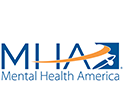Medicare Part D Enrollment: What You Need to Know
Medicare Open Enrollment began yesterday and runs through December 7, 2024. During open enrollment, you can review your current health insurance coverage and make changes to your health insurance and other benefits. Changes you make during open enrollment may affect your coverage starting January 1, 2025.
To help Real World Health Care subscribers understand how the Inflation Reduction Act’s recent changes to Medicare Part D will impact them, we spoke with Charles E. (Chuck) Collins Jr., MS, MBA, president, Healthcare Stakeholder Solutions, a consultancy focused on health care delivery disparities across multiple therapeutic areas. He described some of the biggest changes enrollees will see and the options they have for paying for prescription medicines.
Shifting Drug Costs
Real World Health Care: How will the Medicare enrollment process change for 2025?
Chuck Collins: The Inflation Reduction Act (IRA) drastically changed the Medicare Part D benefit design by shifting more drug costs from the Medicare beneficiary (the patient) and the federal government to health plans and pharmaceutical manufacturers. For the first time, Medicare Part D beneficiaries will have a maximum out-of-pocket cap of $2,000, whether they take one drug, five drugs, or even more. That means a Medicare Part D beneficiary will not pay more than $2,000 for their drugs in 2025.
This new benefit design has two phases: an initial deductible phase up to $590 (though not all plans have a deductible) and an initial coverage phase in which the beneficiary pays 25% of the retail cost of the drug until the $2,000 cap is satisfied.1
The IRA also caps Part D premiums at an annual growth rate of 6%. For 2025, the base beneficiary Part D premium is $36.78 a month, a 6% increase from 2024. However, the monthly amount that Part D enrollees pay for individual Part D plans is typically different from the base beneficiary premium. That means actual monthly premiums paid by Part D enrollees will vary considerably, ranging from $0 to $100 or more depending on their plan.2
Medicare Advantage Plans
RWHC: Medicare enrollees have the option of purchasing a Medicare Advantage plan. How do Medicare Advantage plans differ from traditional Medicare plans in terms of prescription drug coverage and premiums?
CC: About 53 million of the 67 million Medicare beneficiaries are enrolled in Medicare Part D plans in 2024. Of those, 57% are enrolled in MAPDs (Medicare Advantage Prescription Drug Plan) and 43% are enrolled in stand-alone PDPs (Original Medicare Part D Prescription Drug Plan).2
Medicare Advantage plans receive an additional amount of money from the government (Medicare) above their estimated cost of providing Medicare-covered services (Part A and Part B) for an enrollee. Because of this additional payment, over 75% of MAPD enrollees have minimal or zero-dollar premiums.3 However, MAPDs can use cost-containment measures such as prior authorizations to restrict beneficiary choices. Medicare Advantage plans typically cover additional benefits such as dental, vision, and wellness services, which are not part of original Part A or Part B coverage.
For services covered under Parts A and B, federal regulation requires Medicare Advantage plans to provide an out-of-pocket limit. In contrast, traditional Medicare (Parts A and B) do not have an out-of-pocket limit for covered services. In 2024, the out-of-pocket limit for Medicare Advantage plans may not exceed $8,850 for in-network services and $13,300 for in-network and out-of-network services combined.3 These out-of-pocket limits apply to Part A and B services only, and do not apply to Part D spending. In 2025, MAPD plans will have the same $2,000 drug cap as Part D stand-alone PDPs.
New Medicare Prescription Payment Plan
RWHC: What is the Medicare Prescription Payment Plan, and how can Medicare enrollees know if they should opt in to this new program?
CC: In 2025, the Medicare Prescription Payment Plan (MPPP) – also known as “smoothing” – will be offered to Medicare Part D beneficiaries by their health plans to assist in lowering monthly Part D drug costs, by enabling the enrollee to spread their out-of-pocket costs across the year. This payment plan is completely voluntary. The beneficiary may opt in to the MPPP during open enrollment season, or in any month during the plan year, by completing an election request form. Conversely, a beneficiary may opt out at any time.
Part D sponsors (Medicare plans) must notify prospective Part D beneficiaries of the option to enroll in the MPPP using promotional materials during open enrollment, or whenever a person enrolls in Medicare Part D throughout the year.
Part D sponsors also must have a mechanism to notify a pharmacy when a Part D beneficiary incurs covered Part D drug out-of-pocket costs that make it likely for the beneficiary to benefit from participating in the program. A $600, single-prescription threshold will be used to identify beneficiaries likely to benefit.4
RWHC: If enrollees decide to opt in to the MPPP, what will they need to do? How will this work when they visit the pharmacy?
CC: Part D beneficiaries who opt in to the MPPP will pay $0 at the point of service (at a retail pharmacy or specialty pharmacy) for a covered Part D drug instead of the out-of-pocket cost share they would normally pay when filling a prescription. MPPP enrollees will receive a bill from the Part D health plan for their incurred out-of-pocket costs, whether for one drug, five drugs or more. This bill will be in a monthly amount that cannot exceed the applicable maximum monthly cap.
To stay compliant with the MPPP, Part D beneficiaries will need to pay their monthly bill within the due date. It’s important to note that a Part D beneficiary can be involuntarily removed from the MPPP for lack of payment.
References
- Explaining the prescription drug provisions in the Inflation Reduction Act. Accessed October 13, 2024. https://www.kff.org/medicare/issue-brief/explaining-the-prescription-drug-provisions-in-the-inflation-reduction-act
- A Current Snapshot of the Medicare Part D Prescription Drug Benefit. Accessed October 13, 2024. https://www.kff.org/medicare/issue-brief/a-current-snapshot-of-the-medicare-part-d-prescription-drug-benefit/#:~:text=The%202025%20Part%20D%20base,in%20the%20Inflation%20Reduction%20Act
- Medicare Advantage in 2024: Premiums, Out-of-Pocket Limits, Supplemental Benefits, and Prior Authorization. Accessed October 13, 2024. https://www.kff.org/medicare/issue-brief/medicare-advantage-in-2024-premiums-out-of-pocket-limits-supplemental-benefits-and-prior-authorization/
- Medicare Prescription Payment Plan: Final part one guidance on select topics, implementation of section 1860D-2 of the social security act for 2025, and response to relevant comments. Memorandum from Meena Seshamani, MD, PhD. February 29, 2024. Accessed October 13, 2024. https://www.cms.gov/files/document/medicare-prescription-payment-plan-final-part-one-guidance.pdf


















